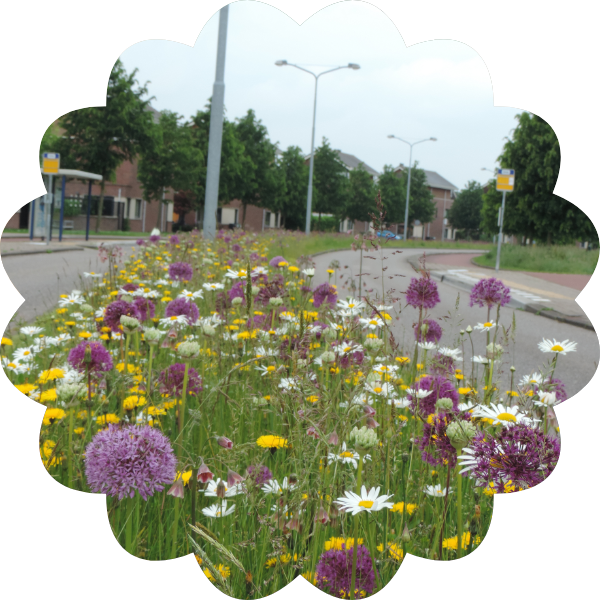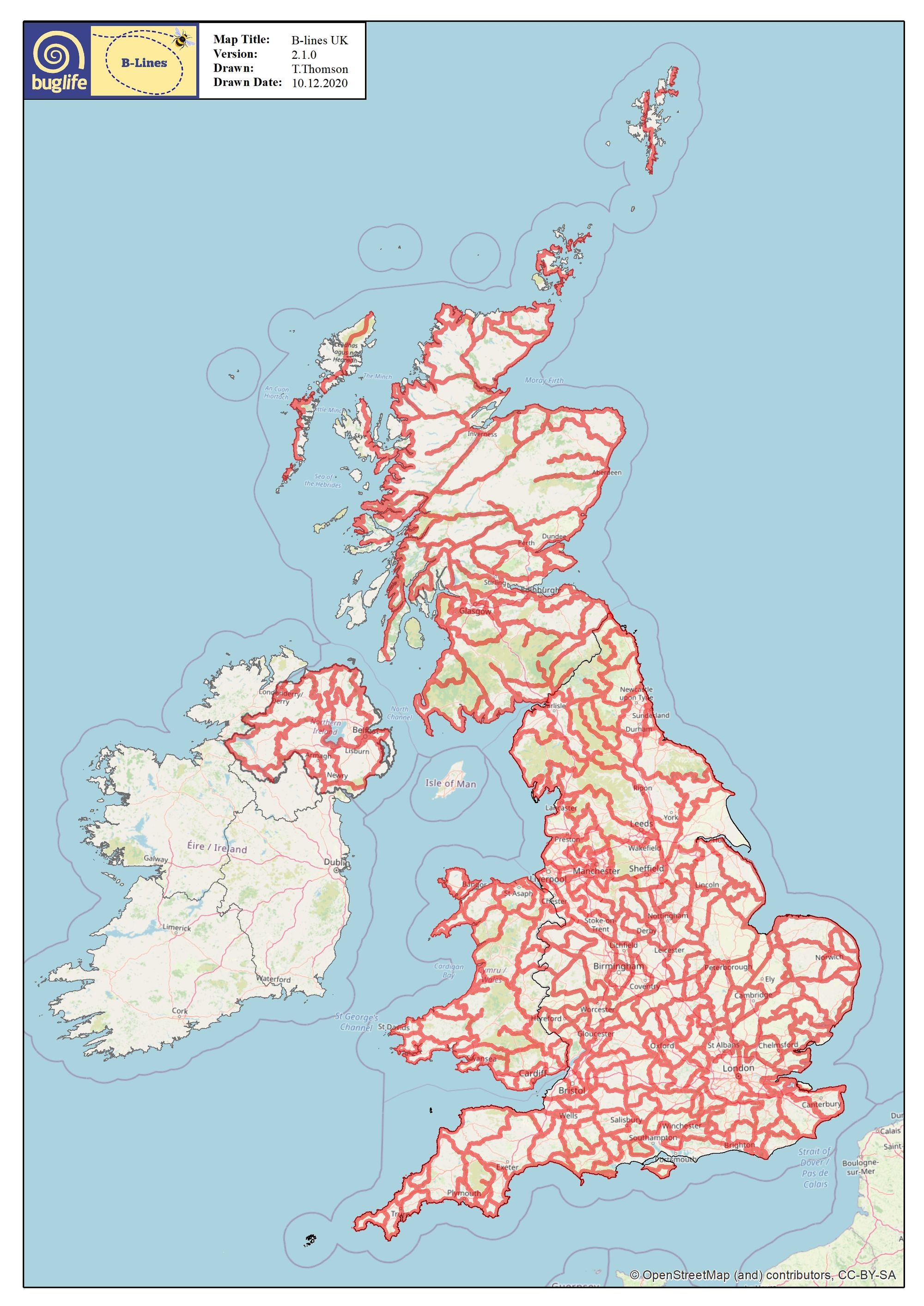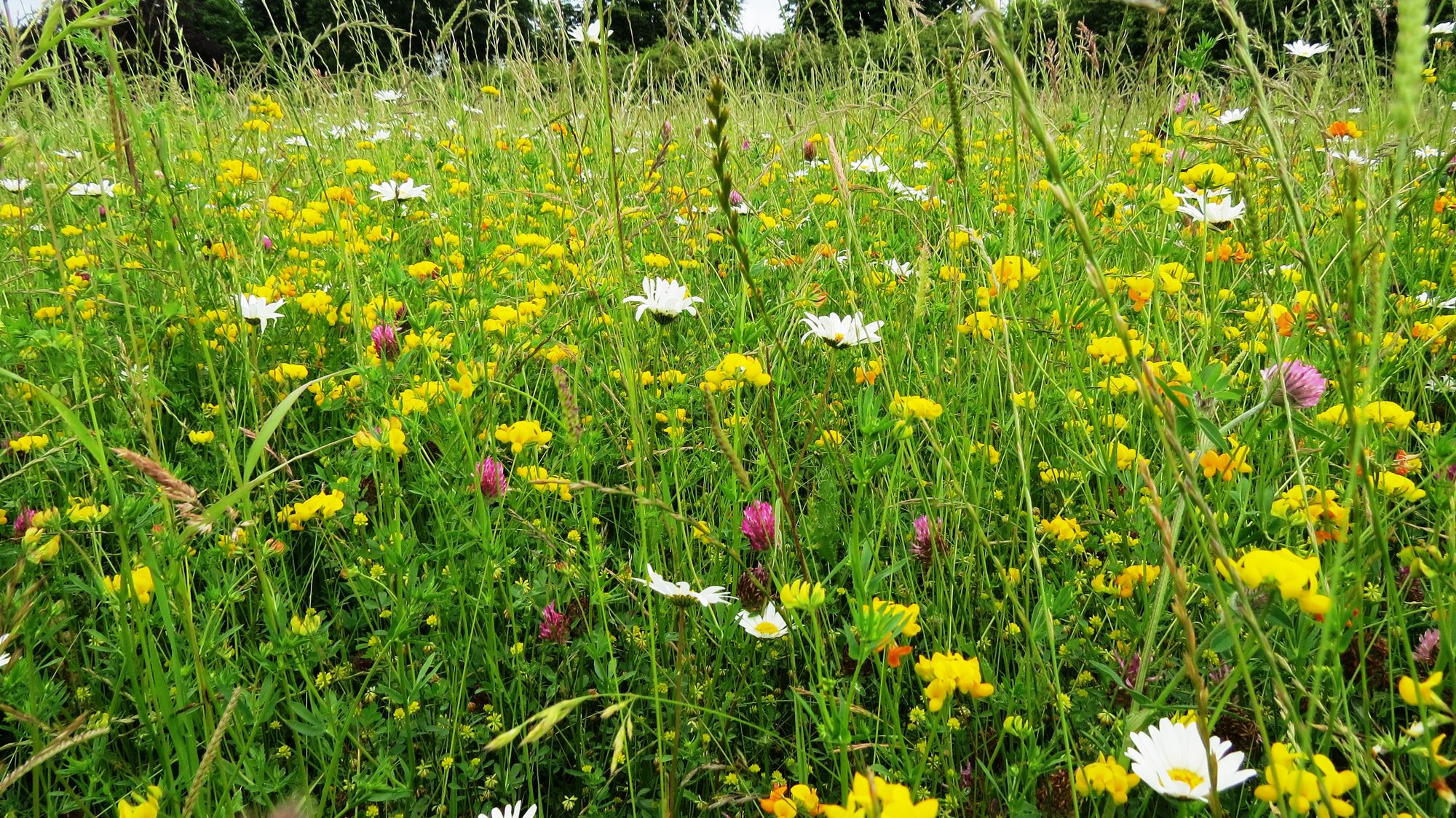Be kind, B-Line
How Buglife are reimagining landscapes for pollinators | By Jack McGovan

Without pollinators, the flowers that brighten our landscapes and the food crops that fill our bellies would all struggle to grow. This makes pollinators a vital part of our ecosystems. The problem is that they’re under threat.
Across the UK, a third of wild bees and hoverflies are in decline.
One of the major drivers of this decline is habitat destruction. When we use land to expand our urban centres or replace natural ecosystems with agricultural monocultures, we’re destroying potential nesting sites, and the floral diversity needed to sustain pollinator populations.
Insect superhighways
Thankfully, however, it’s possible to adapt our man-made landscapes to favour biodiversity, and conservation NGO Buglife has taken on the challenge. They have mapped a series of ‘pathways’ across the UK that go through urban and rural areas. A far stretch from the concrete we’re all used to, these pathways will consist only of wildflower-rich habitats, on which pollinators rely as a food source. The idea is that these new habitats will allow pollinators to migrate and travel. In Canada, a similar initiative, called The Butterflyway Project, also aims to create more biodiverse spaces for bees and butterflies within cities.
Buglife’s proposed pathways are part of the B-Lines project, which has been several years in the making. In total, the project aims to restore 150,000 hectares of flower-rich habitat across the UK—a relatively small fraction of the country's total 24 million hectares. In cities, where most of the land is occupied by concrete infrastructure, strips of wildflowers could bring a welcome sense of wilderness back into the built environment. As we begin to electrify our society, the B-Lines will help replace the thundering sound of combustion engines, with the buzzing and singing of a biodiverse world.

“We’ve already done all of the mapping, and some cities already have lines running right through them,” says Paul Hetherington, the Director of Fundraising and Communications at Buglife, in reference to the B-Lines project. One of the major roadblocks to introducing more wildflowers into the built environment is private property. As such, getting community support is vital.
Peterborough is one of the cities which has a B-Line running through it, and by chance, Hetherington’s house sits on it. To support the project, he’s growing pollinator-friendly plants. “I’ve got a small wildflower meadow at the bottom of my garden, and a variety of fruit trees in my allotment,” he says, before making clear that he didn’t draw the lines himself. For those living in more confined conditions, Heatherington adds that even a window box can make a difference too. “We know exactly where the wildflowers need to be put, but that’s not to say if you put something outside of the B-Line that it’s not a benefit,” he continues.
Happy insects: happy you
Bringing wildflowers into our gardens, our balconies and window sills, benefits more than just the pollinators, according to Dr Alex Opoku, an associate professor in project management & quantity surveying at University College London. Opoku, whose research focuses on sustainability in the built environment, says there are “links between biodiversity and human wellbeing,” and that more urban biodiversity leads to healthier, happier people. Researchers at the University of Adelaide found, for example, that growing up around wild environments has health benefits for children.
Although he agrees that individuals have a role to play, Opoku believes that governments—both national, and local—have to take action as well. “Planning policies are key to driving the integration of biodiversity in cities—if it’s in the law that to build in this area you need to [meet certain green criteria] before you can even get planning permission, then it will push people to do what is right,” he says.

Wildflowers and biodiversity
Outside of cities, Dr Rinke Vinkenoog, a pollination ecologist at Northumbria University, says that modern agriculture, and the use of agrochemicals, is a major problem for pollinators. “The use of fertilizers, monocultures, pesticides, and herbicides lead to large changes in the countryside that threaten their numbers,” he says.
Vinkenoog stresses, however, that the responsibility for modern agriculture’s issues shouldn’t fall on farmers. “Most farmers love the land around them, and are quite happy to work towards solutions that protect ecosystems,” he continues. “But the bottom line is that they need to make a living—they have to grow a certain crop to a certain yield.”
To truly save pollinators, planting more wildflowers must go hand in hand with changes to our farming systems. This means everything from improving efficiency by reducing food waste and meat production—which is the leading cause of habitat destruction—to building systems that aren’t dependent on agrochemicals. As it turns out, however, wildflowers could actually help with that. Vinkenoog suggests that they can act not only as a refuge for pollinators but also as a conduit to attract carnivorous insects that help to control pests—thereby becoming a natural alternative to artificial pesticides.
Anyone is welcome to get involved with the B-Lines project, and Buglife has published a reservoir of information on their website, covering issues such as how to get funding for projects. Saving pollinators is not only necessary to ensure the survival of wildlife, it is a vital step in protecting our minds, bodies, and the life support systems that allow us to live on this Earth—without pollinators, there is no such thing as a sustainable future.
Article written by Jack McGovan (@jack_mcgovan)
Lead image from an urban B-line in Plymouth © Laura Larkin
Please consider supporting our journalism: https://www.paypal.com/donate?hosted_button_id=FFQ2VNZ6Z6BYG

